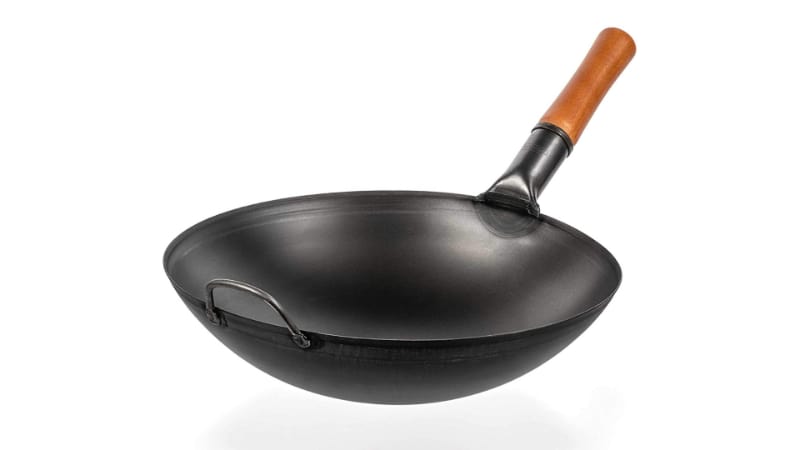


However, the added weight sometimes makes them difficult to handle. They take a very long time to heat up and cool down, and their weight makes stir-frying and other Asian cooking techniques more difficult.Īs they form a more stable and thick layer when seasoned, cast iron woks will be less prone to food sticking. Western cast iron woks are as thick as pans and very heavy. Chinese cast iron woks are very thin and they weigh a little more than a carbon steel wok.
#Carbon steel wok reviews how to
Check out this comprehensive guide on this, explaining how to season and maintain your wok.Ĭast iron woks are relatively uncommon in China but widely used in the Western world. Some chefs argue that carbon steel woks tend to be a little more difficult to season than cast iron woks, but countless online recommendations and videos prove otherwise. Woks made from carbon steel are lightweight and are good heat conductors, making them very quick to heat. MaterialĬarbon Steel is the most widely used material, as it is rather inexpensive. There are wood, plastic, and phenolic handles, which seem to be the most durable materials. Also, pay attention to the material of the handle. But long-handled woks are difficult to maneuver, as the weight isn’t evenly distributed. These work best when cooking at high temperatures, as the handle makes it more comfortable when standing close to the heat. Some types of wok have long handles, similar to frying pans. For commercial use, buy a larger, 16-inch wok. If cooking for 6-12 people, use a 14-inch wok. If you are cooking for a small family, choose a 12-inch wok. The best of wok depends on the purpose for which you want to use it. Look for a wok that is 1.5-2 millimeters thick. But, if the wok is too thick, it will be difficult to balance. However, once heated, a thick wok will preserve heat for much longer and distribute it more evenly. If the wok is thick, it will take more time to heat up. What to Consider When Buying a Wok Thickness The wok can be used for many cooking techniques, such as stir-frying, steaming, pan-frying, deep-frying, poaching, boiling, braising, searing, stewing, making soup, or smoking. With the traditional, round-bottomed shape, it is easier to pick up all the food on the bottom and toss it around. The round-bottomed wok is the traditional one, but flat-bottomed woks were introduced in the West to accommodate standard gas stoves. The wok can be round-bottomed or flat-bottomed (depending on the type of stove). It can be made of stainless steel, cast iron, or carbon steel, though, usually, carbon steel woks are used for cooking traditional dishes. Used for over 2000 years in Chinese and Asian cooking, the wok is a type of cooking equipment that holds a true fascination in the Western world.


 0 kommentar(er)
0 kommentar(er)
